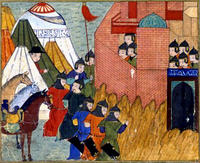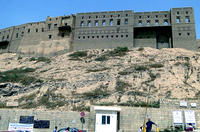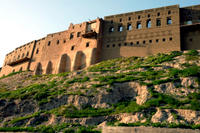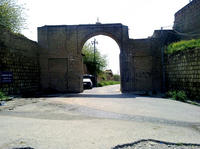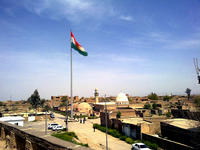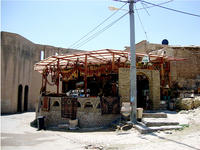You are in: Middle East -> Iraq -> Erbil Citadel, and traditional search or Image Gallery will yield results of this site only
Erbil Citadel
| Site number: | 1437 |
|
| Type of site: | Cultural | |
| Date: | 18-19th centuries | |
| Date of Inscription: | 2014 | |
| Location: | Middle East, Iraq, Kurdistan region, Erbil Governorate | |
Up to 75 images are shown here. Click on each for more details or on Image Gallery for more images.
| Description: | Erbil Citadel is a fortified settlement on top of an imposing ovoid-shaped tell (a hill created by many generations of people living and rebuilding on the same spot) in the Kurdistan region, Erbil Governorate. A continuous wall of tall 19th-century façades still conveys the visual impression of an impregnable fortress, dominating the city of Erbil. The citadel features a peculiar fan-like pattern dating back to Erbil’s late Ottoman phase. Written and iconographic historical records document the antiquity of settlement on the site – Erbil corresponds to ancient Arbela, an important Assyrian political and religious centre – while archaeological finds and investigations suggest that the mound conceals the levels and remains of previous settlements. --From the description at WHC Site, where additional information is available. | |
| The Citadel of Arbil (Kurdish:قهڵای ههولێر Qelay Hewlêr; Arabic: قلعة أربيل) is a tell or occupied mound, and the historical city centre of Arbil in Iraq. It has been claimed that the site is the oldest continuously inhabited town in the world.[1] Arbil citadel has been inscribed on the World Heritage List on June 21, 2014. The earliest evidence for occupation of the citadel mound dates to the 5th millennium BC, and possibly earlier. It appears for the first time in historical sources during the Ur III period, and gained particular importance during the Neo-Assyrian period. During the Sassanian period and the Abbasid Caliphate, Arbil was an important centre for Christianity. After the Mongols captured the citadel in 1258, the importance of Arbil declined. During the 20th century, the urban structure was significantly modified, as a result of which a number of houses and public buildings were destroyed. In 2007, the High Commission for Erbil Citadel Revitalization (HCECR) was established to oversee the restoration of the citadel. In the same year, all inhabitants, except one family, were evicted from the citadel as part of a large restoration project. Since then, archaeological research and restoration works have been carried out at and around the tell by various international teams and in cooperation with local specialists. The government plans to have 50 families live in the citadel once it is renovated. The buildings on top of the tell stretch over a roughly oval area of 430 by 340 metres (1,410 ft × 1,120 ft) occupying 102,000 square metres (1,100,000 sq ft). The only religious structure that currently survives is the Mulla Afandi Mosque. The mound rises between 25 and 32 metres (82 and 105 ft) from the surrounding plain. When it was fully occupied, the citadel was divided in three districts or mahallas: from east to west the Serai, the Takya and the Topkhana. The Serai was occupied by notable families; the Takya district was named after the homes of dervishes, which are called takyas; and the Topkhana district housed craftsmen and farmers. --Wikipedia. Text is available under the Creative Commons Attribution-ShareAlike License. | ||
| Source: | http://whc.unesco.org/en/list/1437 | |
| Source2: | Wikipedia (http://wikipedia.com) | |
| Reference: | 1. UNESCO World Heritage Center (http://whc.unesco.org/en/list/1437). 2. Wikipedia. | |




